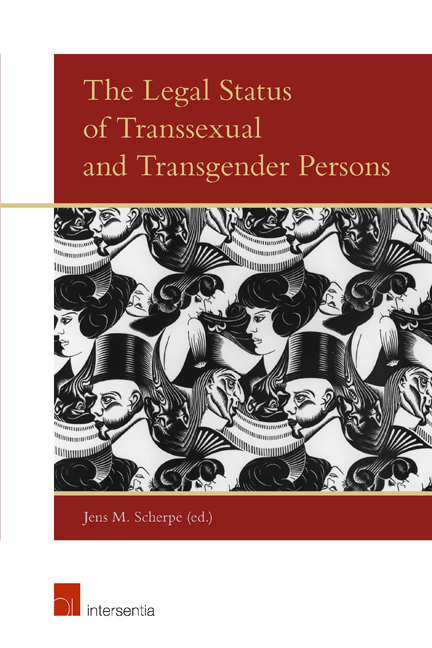Book contents
- Frontmatter
- Dedication
- Preface
- Contents
- List of Contributors
- Introduction
- PART I MEDICAL/PSYCHOLOGICAL VIEWS
- PART II CHRISTIAN VIEWS
- PART III LEGAL VIEWS
- Europe
- Belgium and the Netherlands
- Czech Republic
- Denmark
- England and Wales
- Germany
- Ireland
- Italy
- Spain
- Sweden
- Turkey
- Asia
- Australia and New Zealand
- North and South America
- PART IV CONCLUSION
Italy
from Europe
Published online by Cambridge University Press: 28 November 2017
- Frontmatter
- Dedication
- Preface
- Contents
- List of Contributors
- Introduction
- PART I MEDICAL/PSYCHOLOGICAL VIEWS
- PART II CHRISTIAN VIEWS
- PART III LEGAL VIEWS
- Europe
- Belgium and the Netherlands
- Czech Republic
- Denmark
- England and Wales
- Germany
- Ireland
- Italy
- Spain
- Sweden
- Turkey
- Asia
- Australia and New Zealand
- North and South America
- PART IV CONCLUSION
Summary
LEGAL FRAMEWORK
There is currently no single, uniform law which regulates the status of transsexual or transgender persons in Italy. Italian law does not define trangenderism and transsexualism. Italy first introduced legislation for the legal recognition of preferred gender in 1982. The Sex Reassignment Act 1982 (‘the 1982 Act’) does not specifically regulate the status of transsexual or transgender persons, but rather establishes a set of requirements which an individual must satisfy in order to have their gender identity recognised in Italian law.
Italy has adopted legislation which prohibits discrimination on the basis of gender identity. Under Article 3.1 of the Italian Constitution, all citizens have ‘equal social dignity’ and are ‘equal before the law’, without distinction as to ‘sex, race, language, religion, political opinion, personal and social conditions’. Recognising that the right to privacy protects self-determination and that sexuality, as well as a person's sexual life, are at the core of private life, there has been a recent trend towards better protection for the identity of the person and, as a result, increased social integration of transsexual and transgender persons. Various regional laws now expressly use the language of ‘transgender’ and numerous draft laws have been published which would protect transgender persons against discrimination and sexual crimes.
CHANGING LEGAL SEX AND GENDER – REQUIREMENTS AND PROCEDURE
Under Italian law, the registration of a new birth must always include the name and legal gender of the child. The legal gender to be registered (female or male) is generally determined by the biological sex characteristics of the newborn. If, however, at the time of birth, the child exhibits ambiguous sex characteristics (intersex), doctors may, in consultation with the child's parents, assign a legal gender to the child. Where, at a later stage, it is apparent that the selection is inconsistent with the child's physical development, it is possible in certain circumstances to amend the birth certificate.
Before 1982, gender confirmation surgery was prohibited in Italy. Italian law adhered to the belief that sex is ‘immutable’ and that a person's body is ‘inviolable’. However, under the Sex Reassignment Act 1982, surgical treatments were finally
- Type
- Chapter
- Information
- The Legal Status of Transsexual and Transgender Persons , pp. 249 - 260Publisher: IntersentiaPrint publication year: 2015



